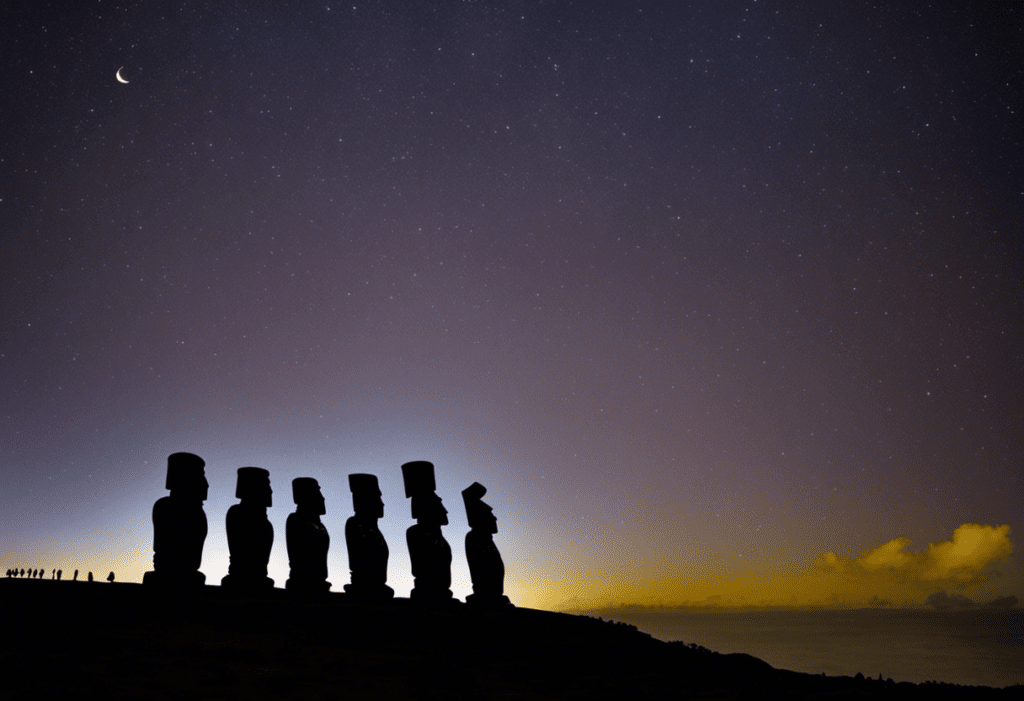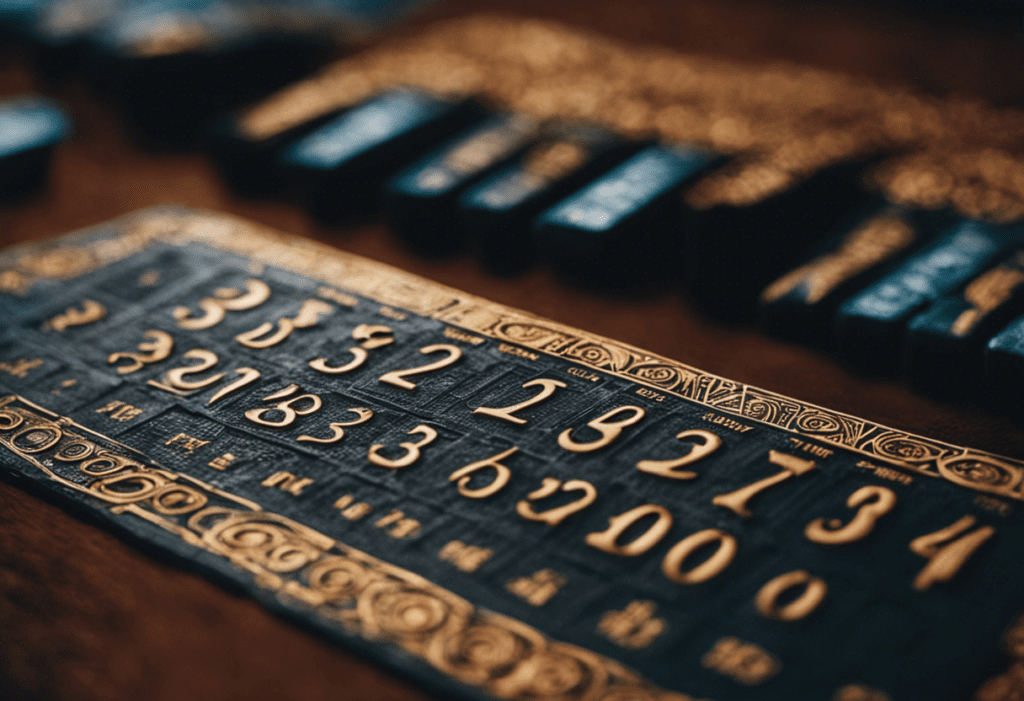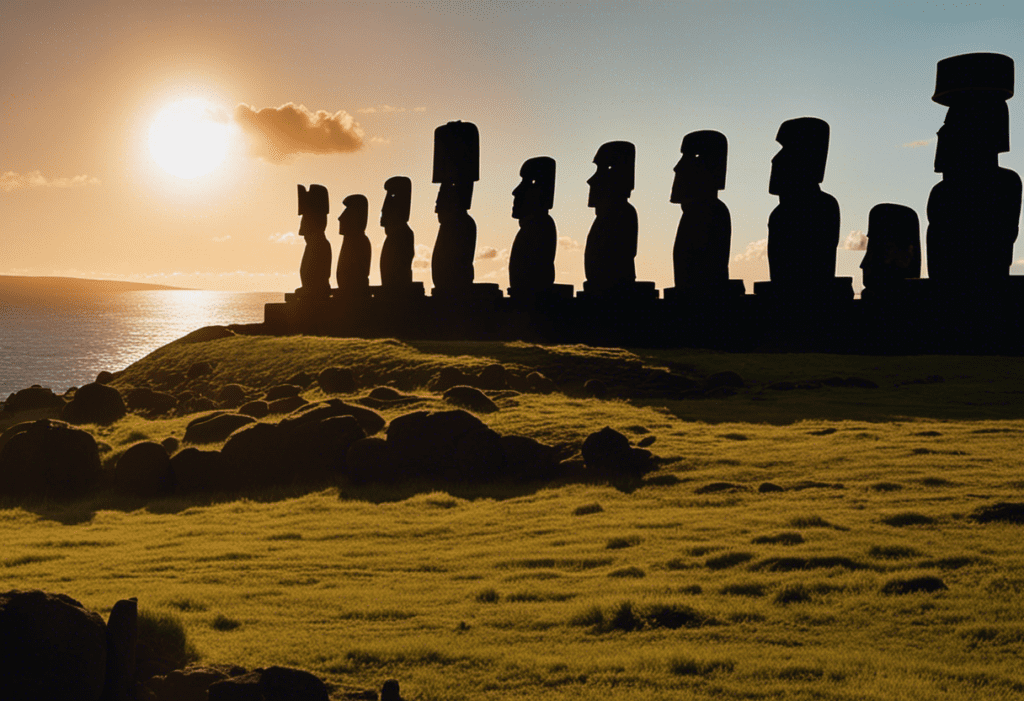The lunar cycles play a significant role in the Rapa Nui calendar, intricately woven into the fabric of their culture. These celestial rhythms are deeply intertwined with the daily lives, rituals, and agricultural practices of the Rapa Nui people.
This article explores the historical, analytical, and spiritual aspects of the lunar cycles’ importance in the Rapa Nui calendar. By exploring ancient wisdom and astrological connections, we gain insight into the profound wisdom behind the lunar influence.
Key Takeaways
- The Rapa Nui calendar relies on precise observation and tracking of lunar cycles, which play a significant role in cultural practices and celestial events.
- Celestial events, such as the alignment of the sun and Moai statues during the summer solstice or the appearance of the Pleiades, hold cultural and spiritual importance in Rapa Nui culture.
- Moon phases determine the timing and organization of traditional ceremonies, aligning religious practices with the natural rhythms of the moon and enhancing the cultural significance of rituals.
- Lunar cycles are significant in traditional practices and rituals, influencing agriculture, determining favorable times for planting and harvesting, and guiding important ceremonies.
The Lunar Basis of the Rapa Nui Calendar


The Rapa Nui calendar relies on the precise observation and tracking of lunar cycles as a fundamental basis for its timekeeping system. Lunar cycles play a significant role in the cultural practices and celestial events of the Rapa Nui people, who inhabit Easter Island in the southeastern Pacific Ocean. The Rapa Nui calendar is a lunar-solar calendar that combines the cycles of the moon and the sun to mark important events and rituals.
The Rapa Nui people closely monitor the phases of the moon to determine the timing of various activities, such as planting and harvesting crops, fishing expeditions, and religious ceremonies. The lunar cycles serve as a guide for agricultural and fishing practices, providing valuable information about tides, ocean currents, and optimal periods for different activities.
Additionally, observing lunar cycles allows the Rapa Nui people to track and predict celestial events, such as eclipses and meteor showers. These celestial phenomena hold significant cultural and spiritual importance for the Rapa Nui, who view them as divine messages or omens. Accurately predicting and interpreting these celestial events strengthens their connection to the spiritual realm and reinforces their cultural practices.
Celestial Significance in Rapa Nui Culture
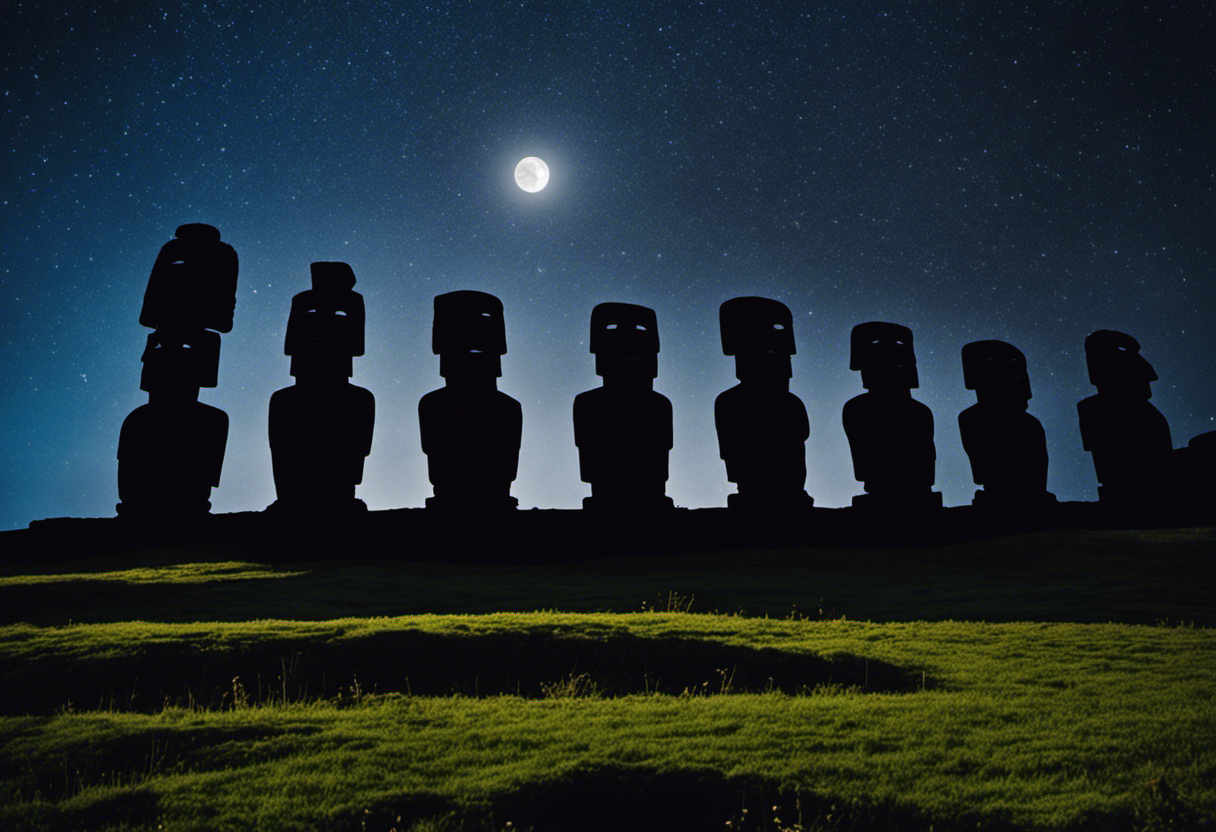

Celestial Significance in Rapa Nui Culture
Celestial events hold great cultural and spiritual importance in Rapa Nui culture. They are seen as divine messages or omens that strengthen the connection to the spiritual realm and reinforce the cultural practices of the Rapa Nui people. The Rapa Nui people have a deep understanding of celestial events and their cultural significance, which they have passed down through generations.
One of the most significant celestial events in Rapa Nui culture is the alignment of the sun and the Moai statues during the summer solstice. This alignment is believed to bring blessings and good fortune to the people and their land. The Rapa Nui people gather at the ceremonial sites to witness this event and participate in rituals and ceremonies to honor their ancestors and seek their guidance.
Another celestial event of cultural significance is the Pleiades star cluster, also known as the Seven Sisters. The appearance of the Pleiades in the night sky marks the beginning of the planting season for the Rapa Nui people. It is believed that the alignment of the Pleiades with certain landmarks on the island helps determine the optimal time for planting crops.
Moon Phases and Ritual Observances
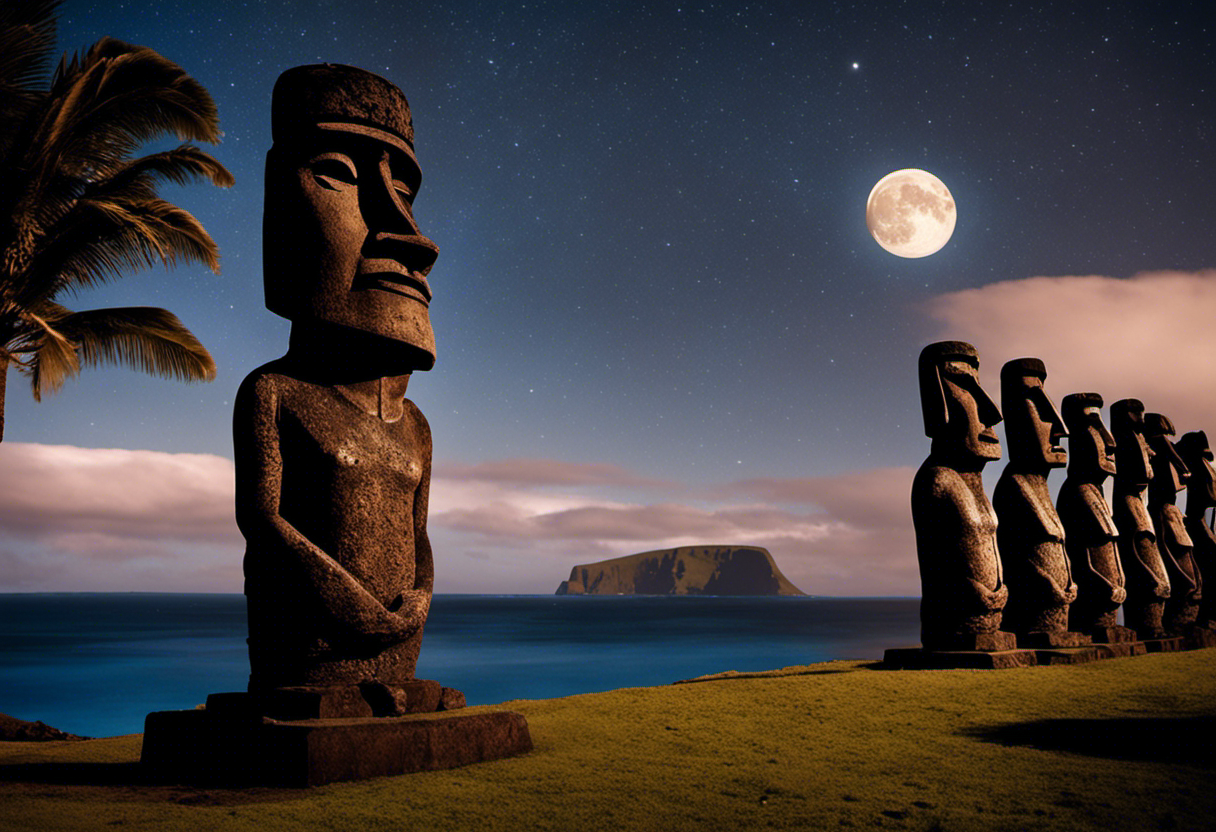

Moon phases play an important role in the ritual observances of the Rapa Nui people. The different phases of the moon determine the timing and organization of traditional ceremonies and cultural events.
By understanding these phases, the Rapa Nui can align their religious practices with the natural rhythms of the celestial bodies. This creates a harmonious connection between their spiritual beliefs and the cyclical patterns of the moon.
This deep connection to the lunar cycles enhances the cultural significance of their rituals and strengthens their bond with the natural world.
Lunar Cycles and Traditions
Lunar Cycles and Traditions
Studying and observing lunar cycles have always played a significant role in the traditional practices and rituals of the Rapa Nui people. The Rapa Nui, who inhabited Easter Island, developed a deep understanding of the moon’s phases and incorporated them into their cultural traditions.
The cycle of the moon had a profound influence on various aspects of their lives, ranging from agriculture to religious ceremonies. By following the lunar calendar, the Rapa Nui determined the most favorable times for planting and harvesting crops, ensuring optimal yields.
Moreover, the moon’s phases provided guidance for important rituals and ceremonies, such as the initiation of young warriors or the celebration of significant events. The Rapa Nui firmly believed that the moon’s influence extended to their spiritual realm, and therefore, observing lunar traditions held great cultural significance.
Through their close observation of the moon, the Rapa Nui were able to navigate their lives while maintaining a strong connection to their ancestral traditions.
Moon Phases and Ceremonies
The Rapa Nui people incorporated lunar phases into their cultural traditions, aligning their important rituals and ceremonies with the celestial rhythm. The timing and planning of these events were closely connected to the spiritual and cosmic realms, as they believed in the significance of the moon phases.
Different phases, such as the new moon, full moon, and waxing and waning crescents, held their own importance and were associated with specific rituals and observances. For instance, during the full moon, the Rapa Nui would come together for communal feasts and perform sacred dances. The waxing and waning crescents were also significant for ceremonies like initiation rites and healing rituals.
Rituals and Lunar Influence
Rapa Nui cultural rituals and observances are influenced by the different phases of the moon, which shape the timing and practices of their sacred ceremonies. The Rapa Nui people believe that celestial events, particularly the moon phases, hold great spiritual significance and play a vital role in their cultural beliefs.
Here are three ways in which lunar influence is evident in their rituals:
-
Timing of ceremonies: Rapa Nui ceremonies, including the Tapati Rapa Nui festival, are often scheduled to align with specific moon phases. This ensures that the rituals are performed at the most auspicious and spiritually charged moments.
-
Moon phase rituals: The Rapa Nui people have dedicated rituals for each phase of the moon. For example, during the full moon, they participate in nocturnal ceremonies to honor their ancestors and seek their guidance.
-
Lunar calendar: The Rapa Nui calendar is based on lunar cycles, with each month corresponding to a specific moon phase. This lunar calendar serves as a guide for planning various cultural events and ceremonies throughout the year.
These celestial events and cultural beliefs intertwine deeply, shaping the spiritual practices of the Rapa Nui people and providing them with a profound connection to their ancestors and the natural world.
Lunar Cycles and Agricultural Practices


The agricultural practices of the Rapa Nui people on Easter Island are deeply influenced by lunar cycles. They have developed a sophisticated system called lunar planting, which involves aligning their agricultural activities with specific phases of the moon. The Rapa Nui people believe that different phases of the moon have varying effects on plant growth and development. By closely observing these lunar cycles, they can optimize their agricultural practices and enhance their crop yields.
During the waxing phase of the moon, when the moon is growing larger, the Rapa Nui people focus on planting crops that require rapid growth, such as root vegetables and leafy greens. They believe that this phase is a time of increased energy and fertility, making it ideal for promoting plant growth.
Conversely, during the waning phase of the moon, when the moon is decreasing in size, the Rapa Nui people prioritize harvesting and pruning crops. This phase is associated with a decrease in energy and fertility, making it more suitable for activities that involve cutting or reducing plant growth.
Aligning their agricultural activities with lunar cycles allows the Rapa Nui people to optimize their crop yields and ensure sustainable farming practices. This traditional knowledge has been passed down through generations and continues to be an integral part of their agricultural practices today.
Astrological Connections in the Rapa Nui Calendar
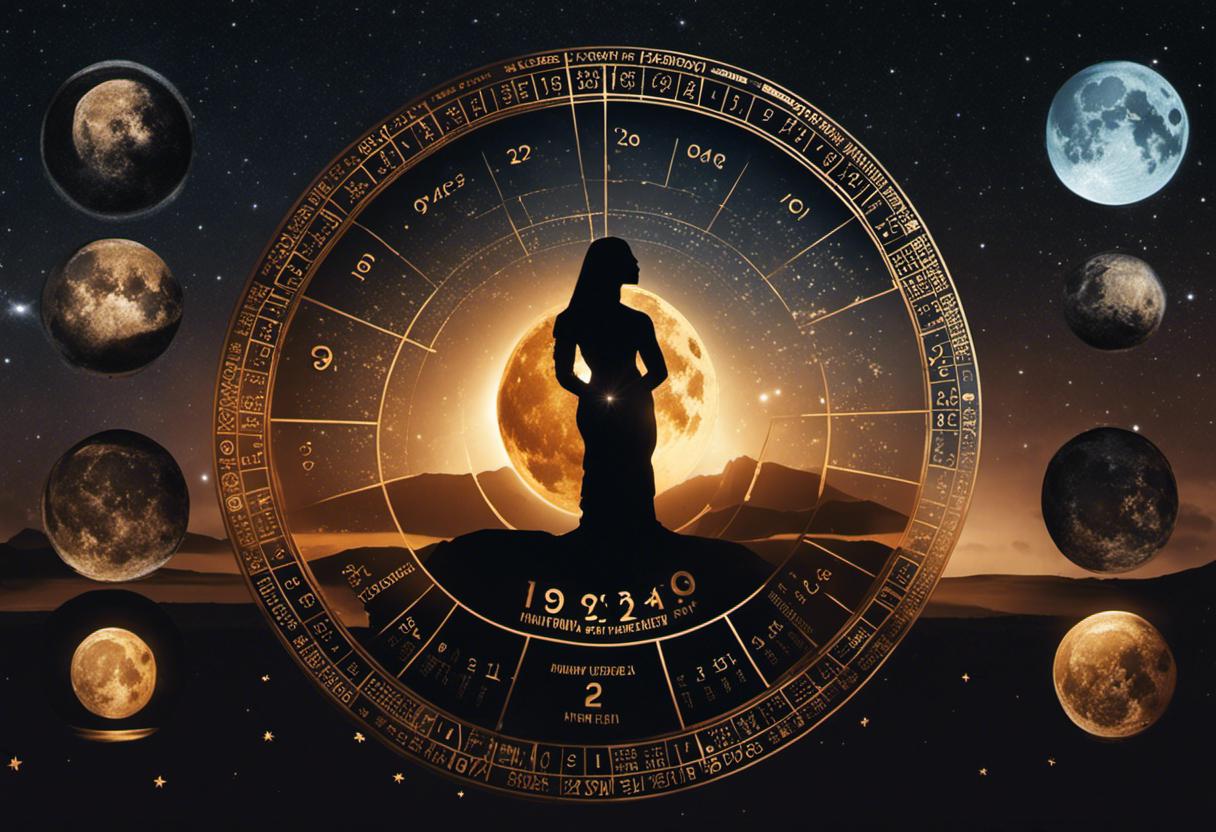

Understanding the astrological connections in the Rapa Nui calendar provides valuable insights into the ancient beliefs and practices of this Polynesian civilization. The Rapa Nui people had a deep understanding of celestial movements and believed that the positions of the stars and planets influenced their daily lives. Incorporating astrological interpretations into their calendar system, which played a significant role in their religious and cultural practices.
To paint a picture of the astrological connections in the Rapa Nui calendar, let’s consider the following:
-
Celestial Event Observations: The Rapa Nui people closely observed the movements of celestial bodies, such as the rising and setting of specific stars and the alignment of planets. These observations allowed them to make predictions about future events and determine auspicious times for various activities.
-
Lunar Worship: The moon held great significance in the Rapa Nui culture. They worshipped the moon and believed that it influenced the fertility of their crops, the behavior of animals, and even human emotions. The lunar phases played a crucial role in determining the optimal time for planting, harvesting, and other agricultural activities.
-
Cosmological Symbolism: The Rapa Nui calendar was also imbued with cosmological symbolism. The alignment of celestial bodies and the lunar cycles were seen as representations of the interconnectedness of the natural world and the spiritual realm.
The Spiritual Influence of Lunar Rhythms
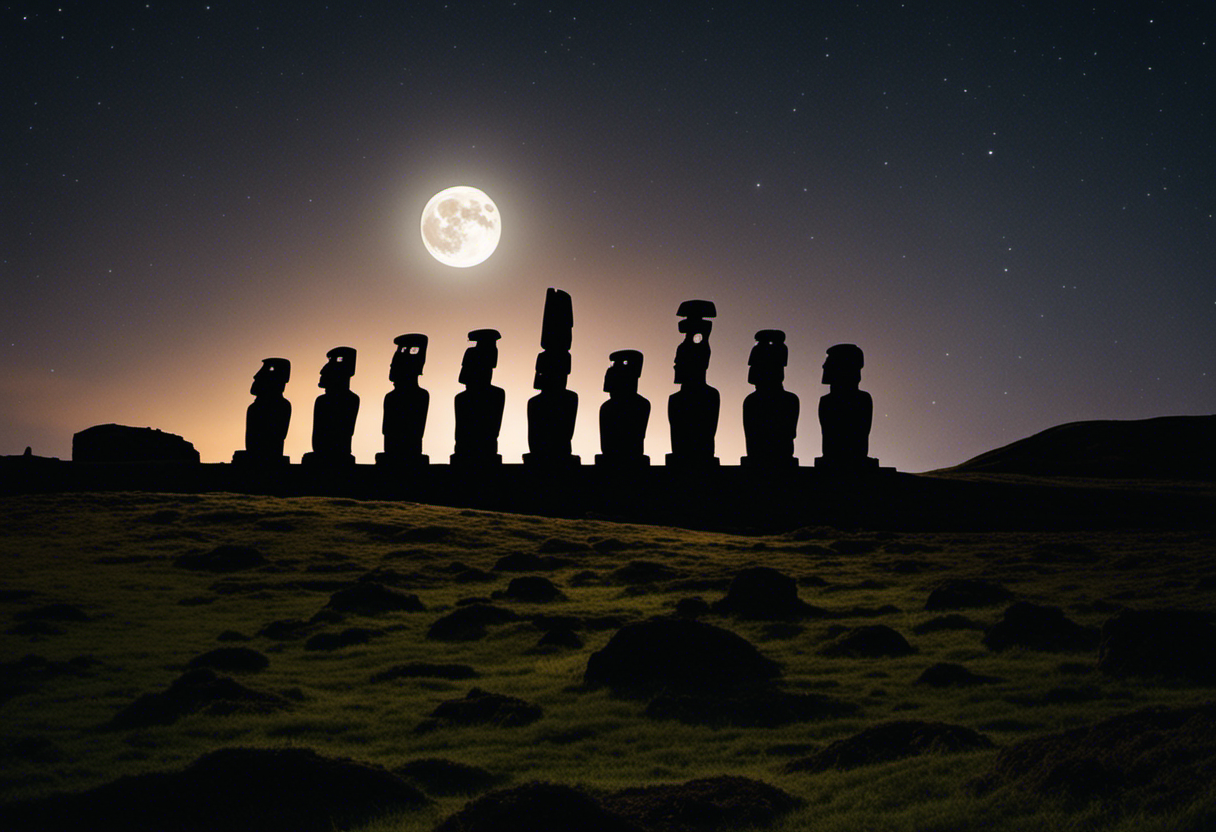

The influence of lunar rhythms held great significance in the religious practices of the Rapa Nui people.
Lunar rituals and ceremonies were an essential part of their spiritual traditions, allowing them to connect with the divine and pay homage to their ancestors.
The symbolism and meaning associated with the cycles of the moon guided their spiritual practices and deepened their understanding of the universe and their place in it.
Lunar Rituals and Ceremonies
One important aspect of the Rapa Nui calendar is the inclusion of various rituals and ceremonies that are influenced by the rhythmic cycles of the moon. The lunar celebrations hold a special place in the spiritual beliefs of the Rapa Nui people, where moon worship is an integral part of their cultural practices.
Here are some of the key lunar rituals and ceremonies observed by the Rapa Nui:
-
Full Moon Ceremonies: During the full moon, the Rapa Nui would gather to perform sacred rituals and offer prayers to the moon. These ceremonies were believed to strengthen spiritual connections and bring blessings to the community.
-
New Moon Rituals: The new moon was seen as a time of renewal and purification. The Rapa Nui would engage in cleansing rituals and make offerings to the moon, seeking spiritual guidance and protection.
-
Eclipse Observations: Lunar eclipses were considered significant celestial events by the Rapa Nui. They would carefully observe and interpret these occurrences, believing them to be messages from the gods or ancestors.
These lunar rituals and ceremonies played a crucial role in connecting the Rapa Nui with the celestial world and reinforcing their spiritual beliefs.
Lunar Symbolism and Meaning
Exploring the Rapa Nui calendar further, we uncover the significance of lunar cycles and their spiritual influence.
The Rapa Nui people held a deep belief in the symbolic meaning of the moon, associating it with fertility, renewal, and transformation. They saw the lunar phases as a reflection of the cyclical nature of the universe, attributing great power to the moon’s influence on their daily lives.
Incorporating lunar symbolism into their calendar, the Rapa Nui used it as a guiding force for their rituals and ceremonies. For example, they considered the new moon as a time for new beginnings and planting crops, while the full moon was believed to strengthen spiritual connections and facilitate communication with ancestors.
Impact on Spiritual Practices
The Rapa Nui calendar incorporates lunar cycles to harness the spiritual significance of these rhythms in their religious and ceremonial practices. The lunar cycles hold great importance in the spiritual beliefs of the Rapa Nui people, guiding them in their cultural practices and connecting them to the natural world.
The impact of lunar rhythms on spiritual practices can be observed in the following ways:
-
Ceremonial rituals: The Rapa Nui people perform various ceremonies and rituals that are timed according to the lunar phases. These rituals include offerings, dances, and chants, all designed to honor their ancestors and seek guidance from the spiritual realm.
-
Agricultural activities: The lunar cycles also influence the timing of agricultural practices, such as planting and harvesting. The Rapa Nui people believe that aligning their agricultural activities with the lunar rhythms ensures a bountiful harvest and a connection to the land and its spirits.
-
Spiritual guidance: The lunar cycles are believed to provide spiritual guidance and insight into the future. The Rapa Nui people interpret the movements of the moon as messages from the divine, guiding their decisions and actions in everyday life.

